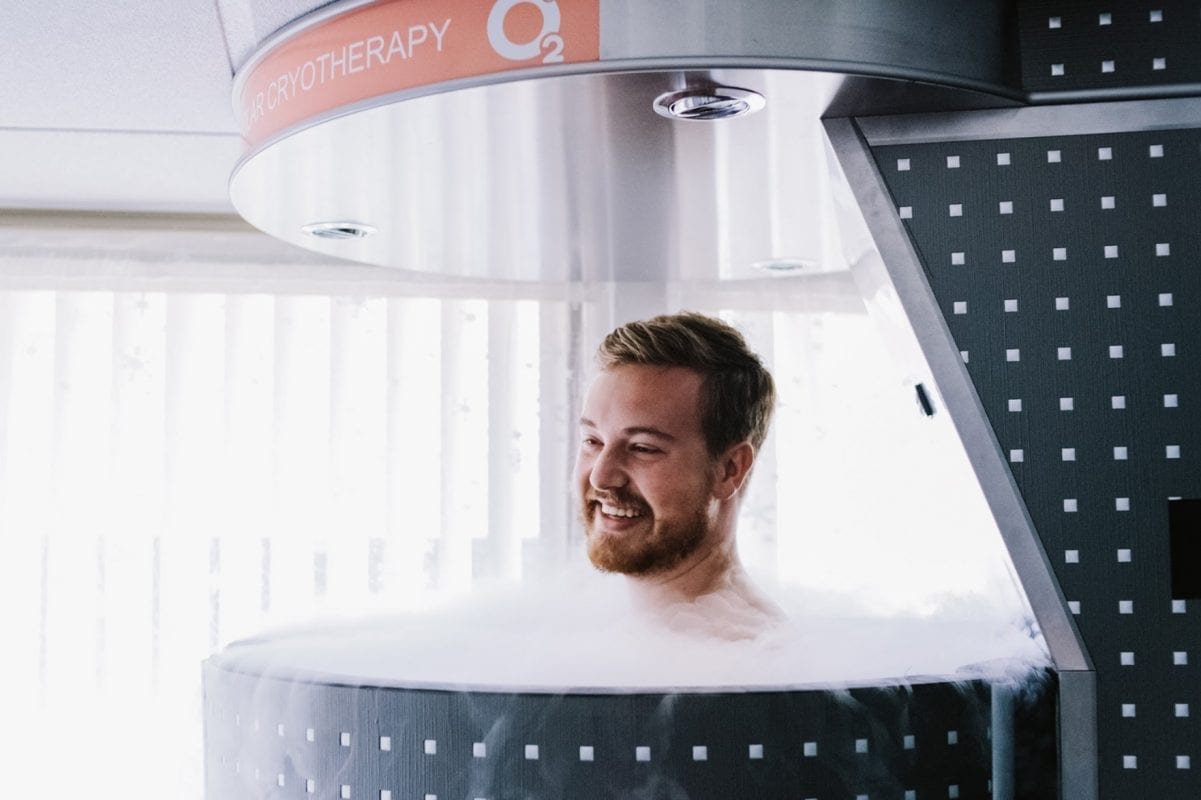For centuries our ancestors have bathed in freezing water. The Greeks, the Romans, and most famously the Scandinavians have used this method to clean themselves and obtain health benefits unavailable from the comfortable steamy showers that we in the twenty first century have become so accustomed to. Cryotherapy is the simple act of exposing the body to a cold environment to facilitate recovery after exercise. There have been many anecdotal reports that individuals feel better after cold exposure and one study from the Journal of Thermal Biology conducted research to “ice-olate” the truth.
In this experiment thirty-six physically active men aged twenty to twenty-seven who were not professional athletes participated in a minute-long test that involved jumping as high as they could from a full squat. The men were split evenly into three groups and they either passively recovered, were massaged with ice, or had a full cold-water exposure (an ice bath). Both cold techniques were administered for three minutes. The lactic acid levels in the blood of all the participants were measured and the results found that in the ice massage group the levels decreased by 4.25 mmol/L, while in the cold-water immersion group they decreased by 4.96 mmol/L when compared to the passive recovery group. When it comes to the reduction of delayed onset muscle soreness (the pain after working out that occurs between twelve to seventy-two hours after exercise), twenty-four hours after the test there was no significant differences in discomfort between the groups however forty-eight hours later the cold-water immersion group reported to be in the least amount of pain compared to the other two based off of a subjective scale. After seventy-two hours both the groups exposed to the cryotherapy reported to be in less discomfort than the passive group.
The physiological responses to a cold environment are truly a marvel to behold. To obtain the numbing effect of cryotherapy the skin temperature has to be lowered by five to fifteen degrees Celsius, this is rather easy if you leave some water in a container (such as a garbage bin) outside in our Canadian tundra or have a nice cold shower. Hop in when the water has reached a refreshing temperature between fifteen and zero degrees Celsius. Initially your blood vessels will constrict, and this will increase, then after two to six minutes the reverse happens! Your blood vessels dilate and blood fills all your tissues even faster carrying away toxins like lactic acid, carbon dioxide, and lymph while replenishing the oxygen, macro and micronutrients. This condition has been shown to last up to six hours after exiting the water. Blood contents change with an increase in levels of hemoglobin (the part that carries oxygen in the blood), leukocytes, and platelets (your white blood cells that reinforce your immune system). The cold environment “calms down” the nervous system stimulating the parasympathetic part of the nervous system (the rest and digest area), this has shown to reduce the perception of pain and relieve symptoms of anxiety or depression through the secretion of norepinephrine. Since your body is cold your body must burn more energy to heat you up therefore burning more fat. Other benefits of cold exposure include improving the skin by closing the pores, boosting testosterone in men, and improving sleep at night.
In conclusion there is empirical evidence that cryotherapy has the potential to increase recovery from physical activity and improve many other characteristics of the body. Now go hop in that icy cold shower!
By Taylor Jones








